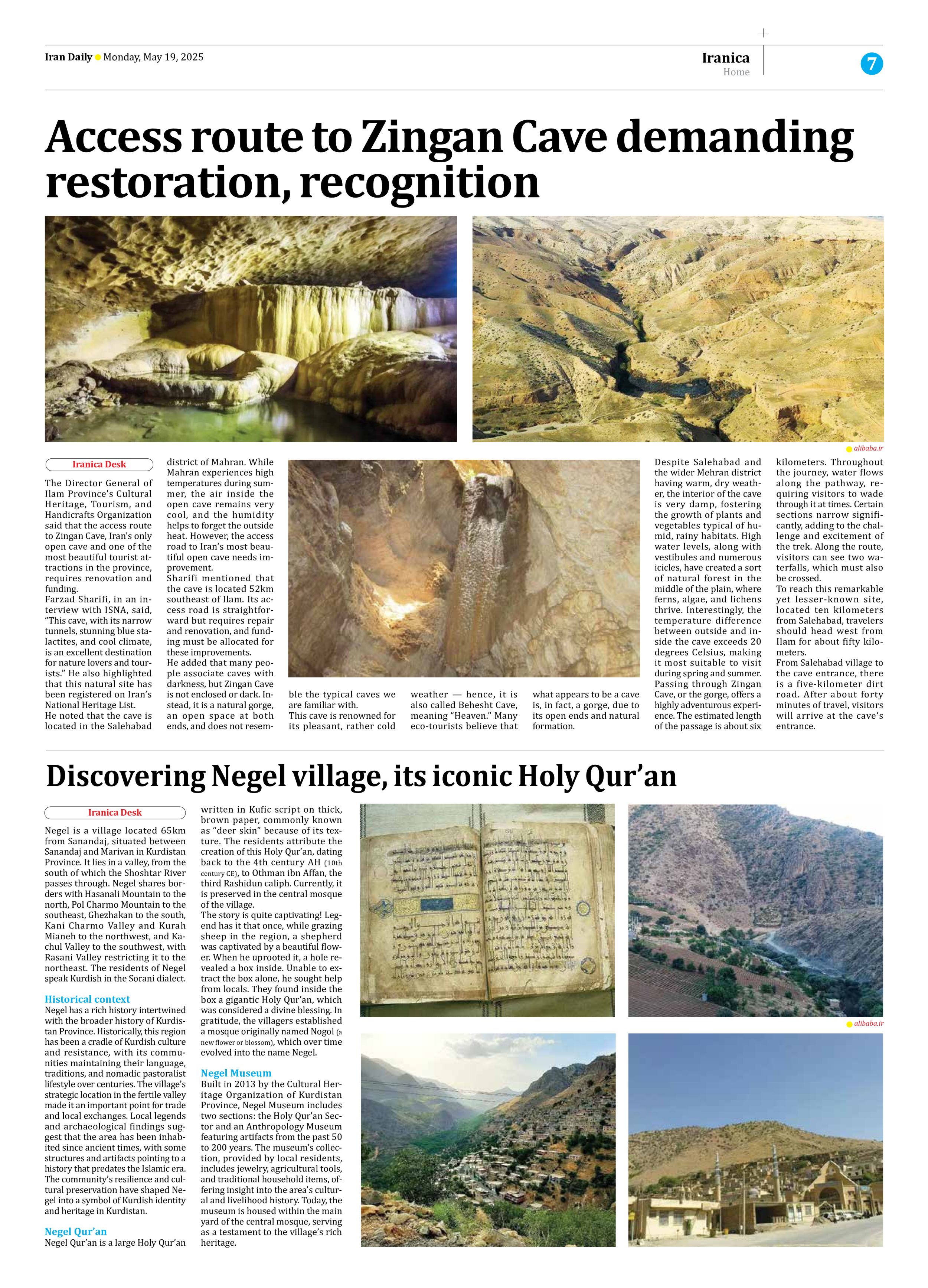
Discovering Negel village, its iconic Holy Qur’an
Negel is a village located 65km from Sanandaj, situated between Sanandaj and Marivan in Kurdistan Province. It lies in a valley, from the south of which the Shoshtar River passes through. Negel shares borders with Hasanali Mountain to the north, Pol Charmo Mountain to the southeast, Ghezhakan to the south, Kani Charmo Valley and Kurah Mianeh to the northwest, and Kachul Valley to the southwest, with Rasani Valley restricting it to the northeast. The residents of Negel speak Kurdish in the Sorani dialect.
Historical context
Negel has a rich history intertwined with the broader history of Kurdistan Province. Historically, this region has been a cradle of Kurdish culture and resistance, with its communities maintaining their language, traditions, and nomadic pastoralist lifestyle over centuries. The village’s strategic location in the fertile valley made it an important point for trade and local exchanges. Local legends and archaeological findings suggest that the area has been inhabited since ancient times, with some structures and artifacts pointing to a history that predates the Islamic era. The community’s resilience and cultural preservation have shaped Negel into a symbol of Kurdish identity and heritage in Kurdistan.
Negel Qur’an
Negel Qur’an is a large Holy Qur’an written in Kufic script on thick, brown paper, commonly known as “deer skin” because of its texture. The residents attribute the creation of this Holy Qur’an, dating back to the 4th century AH (10th century CE), to Othman ibn Affan, the third Rashidun caliph. Currently, it is preserved in the central mosque of the village.
The story is quite captivating! Legend has it that once, while grazing sheep in the region, a shepherd was captivated by a beautiful flower. When he uprooted it, a hole revealed a box inside. Unable to extract the box alone, he sought help from locals. They found inside the box a gigantic Holy Qur’an, which was considered a divine blessing. In gratitude, the villagers established a mosque originally named Nogol (a new flower or blossom), which over time evolved into the name Negel.
Negel Museum
Built in 2013 by the Cultural Heritage Organization of Kurdistan Province, Negel Museum includes two sections: the Holy Qur’an Sector and an Anthropology Museum featuring artifacts from the past 50 to 200 years. The museum’s collection, provided by local residents, includes jewelry, agricultural tools, and traditional household items, offering insight into the area’s cultural and livelihood history. Today, the museum is housed within the main yard of the central mosque, serving as a testament to the village’s rich heritage.







